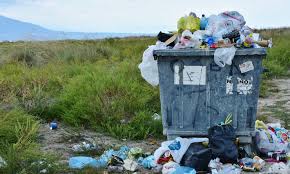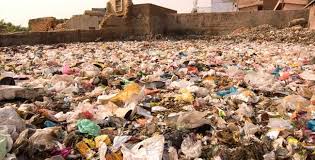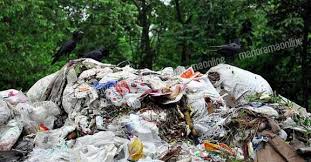Sanitary pad wastes are the used or discarded materials from menstrual hygiene products, like pads worn by individuals during their periods. These waste items include the used pads themselves, along with any packaging or wrappers, and they need to be disposed of properly to maintain cleanliness and hygiene.
Menstruation is a natural part of life for many people. To manage their periods, most individuals use sanitary pads. While these products are essential for maintaining hygiene and comfort during menstruation, it’s crucial to address the issue of sanitary pad wastes responsibly. This article aims to shed light on the importance of proper disposal methods for sanitary pad wastes and how to do it safely and sustainably.
The Problem with Improper Disposal
Improper disposal of sanitary pads can lead to several problems:
1. Environmental Impact: Sanitary pads are primarily made of non-biodegradable materials like plastic and absorbent polymers. When disposed of incorrectly, they can contribute to pollution, harming the environment.
2. Health Risks: Incorrect disposal can expose waste collectors and sanitation workers to potential health hazards. Unsanitary conditions can lead to the spread of diseases.
3. Aesthetic and Hygiene Concerns: Sanitary pad waste, when not disposed of properly, can be unsightly and emit foul odors, creating discomfort in public spaces.
Read Also: 10 Essential Home Waste Management Tips
The Importance of Properly Managing Sanitary Pad Wastes

Menstrual hygiene is a crucial aspect of every person’s life, and sanitary pads play a significant role in ensuring comfort and cleanliness during menstruation. However, the importance of managing sanitary pad wastes properly often goes unnoticed. Let’s take a look at why it is vital to give due attention to the disposal of sanitary pads and how responsible waste management benefits individuals and the environment.
1. Personal Hygiene and Comfort: Proper disposal of sanitary pads helps maintain personal hygiene during menstruation. It prevents odors and potential infections that may arise from improper handling of used pads.
2. Environmental Conservation: Sanitary pads are predominantly made of non-biodegradable materials like plastic. Incorrect disposal can lead to long-lasting environmental pollution.
3. Health and Safety of Waste Collectors: Sanitation workers and waste collectors often come into contact with improperly disposed sanitary pads. This can expose them to health risks, including infections and injuries.
4. Preventing Clogged Sewage Systems: Flushing sanitary pads down toilets can clog sewage systems and pipes.This leads to costly repairs and inconvenience for communities.
5. Community Aesthetics: Proper disposal of sanitary pads maintains the cleanliness and aesthetics of public spaces. It contributes to a more pleasant and hygienic environment for everyone.
6. Promoting Sustainable Alternatives: The awareness of sanitary pad waste encourages individuals to explore sustainable menstrual hygiene products. Biodegradable pads or menstrual cups are eco-friendly alternatives that reduce waste.
7. Respecting Privacy and Dignity: Disposing of sanitary pads discreetly and properly in dedicated bins respects the privacy and dignity of individuals using public restrooms.
Managing sanitary pad wastes is not just a matter of convenience; it is a responsibility that has far-reaching benefits. By disposing of used pads in a responsible and hygienic manner, we ensure our own well-being, protect the environment, and show consideration for the health and dignity of those who handle waste. Let us collectively recognize the importance of proper sanitary pad waste management and contribute to a cleaner, safer, and more sustainable world for all.
How to Dispose of Sanitary Pads Properly
Managing the disposal of sanitary pads is an essential part of maintaining hygiene and keeping our surroundings clean. In this article, we will discuss simple and responsible methods for disposing of sanitary pads, ensuring that you contribute to a healthier and cleaner environment.
1. Wrap It Up: After you have used a sanitary pad, the first step is to wrap it securely. You can use the pad’s original packaging or a separate paper bag, if available.
2. Seal the Odors: Wrapping the used pad helps contain any odor and ensures that it doesn’t spread.
3. Use Dedicated Bins: Many public restrooms provide dedicated bins for sanitary pad disposal. If you are at home, you can have a small bin with a lid in your bathroom exclusively for this purpose.
4. Do Not Flush: Never flush sanitary pads down the toilet. Sanitary pads don’t break down like toilet paper and can clog pipes and sewage systems.
5. Be Discreet: When disposing of sanitary pads in public bins, be discreet and respectful of others’ privacy. Fold the wrapped pad so that it’s not visible when you dispose of it.
6. Dispose Responsibly: Remember that sanitary pad waste is not just a personal matter but an environmental concern. By disposing of them correctly, you help reduce the impact of non-biodegradable materials.
7. Consider Eco-Friendly Options: If you are environmentally conscious, you can explore alternative menstrual products like biodegradable sanitary pads or menstrual cups.
8. Educate Others: Share this information with friends and family to promote responsible sanitary pad disposal practices.
Properly disposing of sanitary pads is a small yet significant step toward maintaining personal hygiene and protecting the environment. By wrapping, sealing, and using dedicated bins, you not only ensure cleanliness but also contribute to the well-being of waste collectors and the overall health of our planet. Let’s all do our part in responsible sanitary pad disposal for a cleaner and more sustainable world.
Read Also: How to Make Money using Sa Recycling Company
Government Regulations on Sanitary Pad Waste

Sanitary pad waste is a significant environmental concern, with billions of disposable pads being discarded annually worldwide. To address this issue and promote sustainable menstrual hygiene management, governments around the world have implemented various regulations and guidelines. This article aims to provide a clear and simple overview of government regulations on sanitary pad waste.
1. Product Labeling and Disposal Instructions: Many governments require manufacturers to include clear disposal instructions on sanitary pad packaging. These instructions typically encourage proper disposal methods, such as wrapping used pads in paper before disposal in a waste bin. This helps reduce the environmental impact by preventing the pads from ending up in landfills or water bodies.
2. Biodegradable and Eco-friendly Materials: In some regions, governments have set regulations encouraging or mandating the use of biodegradable and eco-friendly materials in sanitary pad production. This shift towards sustainable materials aims to reduce the long-lasting environmental impact of non-biodegradable plastic pads.
3. Extended Producer Responsibility (EPR) Programs: Several countries have adopted Extended Producer Responsibility programs for sanitary pad manufacturers. Under these schemes, manufacturers are held accountable for the management of their products’ waste throughout its lifecycle. This can include funding and organizing recycling and disposal programs.
4. Collection and Recycling Initiatives: Governments are increasingly supporting or mandating the establishment of collection and recycling programs for sanitary pad waste. These initiatives aim to divert used pads from landfills and encourage recycling or safe disposal methods.
5. Awareness Campaigns: Public awareness campaigns are often part of government efforts to educate citizens about the proper disposal of sanitary pads. These campaigns emphasize the environmental impact of improper disposal and promote responsible disposal practices.
6. Research and Development Incentives: Some governments offer incentives to encourage research and development in the field of eco-friendly sanitary products. This support can lead to the creation of innovative and sustainable solutions for menstrual hygiene management.
7. Monitoring and Compliance: To ensure that regulations are followed, governments may establish monitoring mechanisms and penalties for non-compliance. This helps maintain the integrity of regulations and ensures that manufacturers and consumers adhere to responsible disposal practices.
Government regulations on sanitary pad waste are essential steps toward reducing the environmental impact of disposable menstrual hygiene products. These regulations encompass product labeling, materials, recycling programs, and public awareness campaigns. By promoting responsible disposal and sustainable alternatives, governments worldwide are contributing to a cleaner and more sustainable future for menstrual hygiene management.
Read Also: Man Utd plot January swoop for Juventus ace Federico Chiesa to replace Jadon Sancho!

